Formed in 1980, the Timothy Eddy/Gilbert Kalish cello-piano duo is another remarkable collaboration. The two players are ubiquitous on the music scene: in addition to giving concerts together, they are active as soloists, chamber musicians and pedagogues. Eddy is the cellist of the Orion Quartet, in residence at Mannes, in whose intimate concert hall the Duo often presents sonata recitals. Their latest concert there—a capacity house on January 25th, 2010—featured many different styles. Classicism: Beethoven’s Variations on a Theme from Mozart’s Magic Flute, played with grace, humor, and inward expressiveness; Romanticism blended with atonality: Ben Weber’s brief Five Pieces, in which three sustained, slow, mournful character sketches are framed by two lively ones; Impressionism: Debussy’s colorful, piquant, ironic Sonata, and Fauré’s Sonata No. 2, elusive and very rarely performed, but obviously loved by these two players. After all this misty evanescence, the vigorous, earthly Prokofiev Sonata brought a sense of relief, as if the clouds had lifted and revealed solid ground under a blue sky. The players, too, seemed more relaxed, unrestrained and free, reveling in its rhythmic vitality and its full-blooded, soaring melodies, totally at one with the music and each other.
Despite snow, Ax and Bell recitals attract large audiences to Carnegie Hall
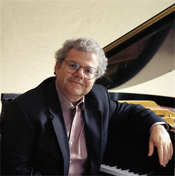 Despite a huge snow storm and a prediction of one, people came out in droves to the large Stern Auditorium at Carnegie Hall to see Emanuel Ax and Joshua Bell. In many ways, violin and piano recitals sound best in smaller, more intimate spaces for which they were intended, but Ax and Bell sell lots of tickets and they need a space that can meet demands. On February 10th, 2010, Manhattan received about 10 inches of snow—not nearly as much as Washington D.C. got the week before—but nonetheless, it was enough to potentially scare people away. Good thing Emanuel Ax has such a great following; the many that attended were treated to a 200th Anniversary celebration of Chopin and Schumann’s birth. Ax was at his best in music by Chopin: the Polonaise-fantaisie in A-flat, the Andante spianato and Grand Polonaise, and especially three Mazurkas: the op 41, No. 1 in C-sharp Minor; the Op. 24, No. 2 in C Major and the Op. 56, No. 3 in C Minor. The young Brit Thomas Ades wrote three mazurkas of his own for the occasion, and they are charming—although they don’t really sound like mazurkas. The first one was almost a carbon copy of Prokofiev, but the last two were quite inventive, with unusual leaps and harmonies. Throughout the program, Ax often used his soft-pedal, and his subdued, semi-passionate performances of Schumann’s Fantasiestucke and Fantasy in C Major lacked some grandeur and spontaneity in faster passages. His encore, the Chopin Waltz in A minor, was also one of his more automatic-pilot performances. Maybe his performance inadvertently hurried as a result of subconsciously and altruistically wanting people to get home after a stormy day. (I know; it’s a stretch)
Despite a huge snow storm and a prediction of one, people came out in droves to the large Stern Auditorium at Carnegie Hall to see Emanuel Ax and Joshua Bell. In many ways, violin and piano recitals sound best in smaller, more intimate spaces for which they were intended, but Ax and Bell sell lots of tickets and they need a space that can meet demands. On February 10th, 2010, Manhattan received about 10 inches of snow—not nearly as much as Washington D.C. got the week before—but nonetheless, it was enough to potentially scare people away. Good thing Emanuel Ax has such a great following; the many that attended were treated to a 200th Anniversary celebration of Chopin and Schumann’s birth. Ax was at his best in music by Chopin: the Polonaise-fantaisie in A-flat, the Andante spianato and Grand Polonaise, and especially three Mazurkas: the op 41, No. 1 in C-sharp Minor; the Op. 24, No. 2 in C Major and the Op. 56, No. 3 in C Minor. The young Brit Thomas Ades wrote three mazurkas of his own for the occasion, and they are charming—although they don’t really sound like mazurkas. The first one was almost a carbon copy of Prokofiev, but the last two were quite inventive, with unusual leaps and harmonies. Throughout the program, Ax often used his soft-pedal, and his subdued, semi-passionate performances of Schumann’s Fantasiestucke and Fantasy in C Major lacked some grandeur and spontaneity in faster passages. His encore, the Chopin Waltz in A minor, was also one of his more automatic-pilot performances. Maybe his performance inadvertently hurried as a result of subconsciously and altruistically wanting people to get home after a stormy day. (I know; it’s a stretch)
Mareda Gaither-Graves, soprano / Warren George Wilson, piano
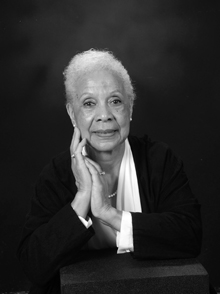 An adoring audience braved a very heavy rain to attend this concert by soprano Mareda Gaither-Graves. They were amply rewarded. The recital began with a thrilling performance of Beethoven’s concert aria “Ah! perfido.” This is a very demanding work, one in which the soloist is asked to exhibit many aspects of the singers art. And Ms. Gaither-Graves was more than up to the task. She is secure in all part of her range and her voice is well supported at all dynamic levels, from floating pianissimos to spine-tingling fortissimos.
An adoring audience braved a very heavy rain to attend this concert by soprano Mareda Gaither-Graves. They were amply rewarded. The recital began with a thrilling performance of Beethoven’s concert aria “Ah! perfido.” This is a very demanding work, one in which the soloist is asked to exhibit many aspects of the singers art. And Ms. Gaither-Graves was more than up to the task. She is secure in all part of her range and her voice is well supported at all dynamic levels, from floating pianissimos to spine-tingling fortissimos.
The Beethoven was followed by three songs, one each by William Grant Still, Howard Swanson and Margaret Bonds. Ms. Gaither-Graves performed these works with deep feeling and perfect diction. The set was entitled “People of Color Speak,” and, in the written program, the audience was told that the songs were “to be sung without pause.” And no applause interrupted the set. But since “to be sung without pause” never appeared again, an unintended consequence was that the audience felt free to applaud after every subsequent song. This applause, although deserved and heartfelt, interrupted the flow of the concert.
The rest of the first half was devoted to German Lieder, three by Joseph Marx and three by Richard Strauss. Again we heard beautiful sounds, clear diction and total commitment to expressing the meaning of the poetry. Memorable moments during the Marx set were the ringing high notes during “Hat dich die Liebe berührt,” and the beautiful soft singing in “Selige Nacht.” Warren George Wilson was a fine accompanist, but he sometimes played a bit too loudly. His page turner, Mrs. Marjorie Landsmark-DeLewis, was graciously acknowledged on the program – a first in my many years of concert-going.
The works on the second half, although sung as well as what was performed before intermission, were just not as interesting musically. And all of the four songs by Ernest Chausson were alike in mood and tempo. Yet Ms. Gaither-Graves’ beautiful phrasing at the end of the second song, “Le Colibri” (The Humming-Bird), was for me one of the evening’s high points. The slow tempi continued during the first three of the four songs by the Russian composer Yuri Falik (b.1936.) But then a fast song, “A Ringing Day,” brought the concert to a rousing conclusion,
After prolonged standing ovations, Ms. Gaither-Graves presented two encores, Miguel Sandoval’s “Lament (Vocalise)” and Samuel Coleridge-Taylor’s “Life and Death.”
Spencer Myer, Piano
Spencer Myer’s biography lists numerous competitions and awards, but he may be bringing more credit to those competitions than they to him. He is a thoughtful, sincerely committed performer who goes beyond mere display, putting the music first. One is sad thinking that any artist has to endure the competitive circuit (or circus), but perhaps it has acted as a crucible for his gifts, for he is also exceptionally polished.
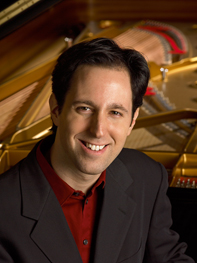
To open his recent recital (presented by Astral Artists), he offered a superb interpretation of Handel’s Suite No. 2 in F Major, treating the opening Adagio movement’s vocal lines with fluidity, sensitive shaping, and excellent balance. The work continued with marvelous transparency of texture, dynamic contrast without excess, and excellent control of the imitative voices in the sparkling final Allegro.
Quite a drastic change of time and mood was effected with Janacek’s Sonata 1. X. 1905, “From the Street.” It was impassioned and convincingly conceived, though some left hand accents were too fast and exaggerated for this listener. Suggesting the outcry of the work’s tragic origins, these articulations can sound hectic, rather than tormented; one cannot doubt, however, that Mr. Myer had his reasons, as the sense of intense feeling and communication was always present.
Schubert Four Impromptus, Op. 90, followed. On paper, this seemed like an unusual juxtaposition, but the solemn narrative quality of the Schubert’s opening was in keeping with the Janacek’s sorrowful “Death” movement, and each ensuing Impromptu was thoughtfully developed. One’s only reservation again was a penchant for highlighting inner lines and lower voices to an exaggerated degree.
Myer’s performance of Copland’s Piano Variations was one of the best in memory, with consummate clarity and projection of its inner workings. “El Amor y la muerte” and “Los requiebros” of Granados (from Goyescas) closed the recital with considerable color. A few slightly labored moments in the latter did little to dull one’s favorable overall impression that Spencer Myer is an artist to watch. A standing ovation led to encores of Debussy’s “Poissons d’or” and Earl Wild’s transcription of Gershwin’s “Embraceable You.”
Orrett Rhoden, Piano
Sometimes an encore can leave a more marked impression on an audience than the program itself, and such was the case with Jamaican pianist Orrett Rhoden’s transcription of the Bob Marley song, “One Love.” A reggae-meets-Liszt fusion of his homeland’s music with his own Romantic pianism, it exemplified Mr. Rhoden’s charismatic and communicative gifts. Indeed, these gifts were present throughout the recital, but there were some issues that detracted.
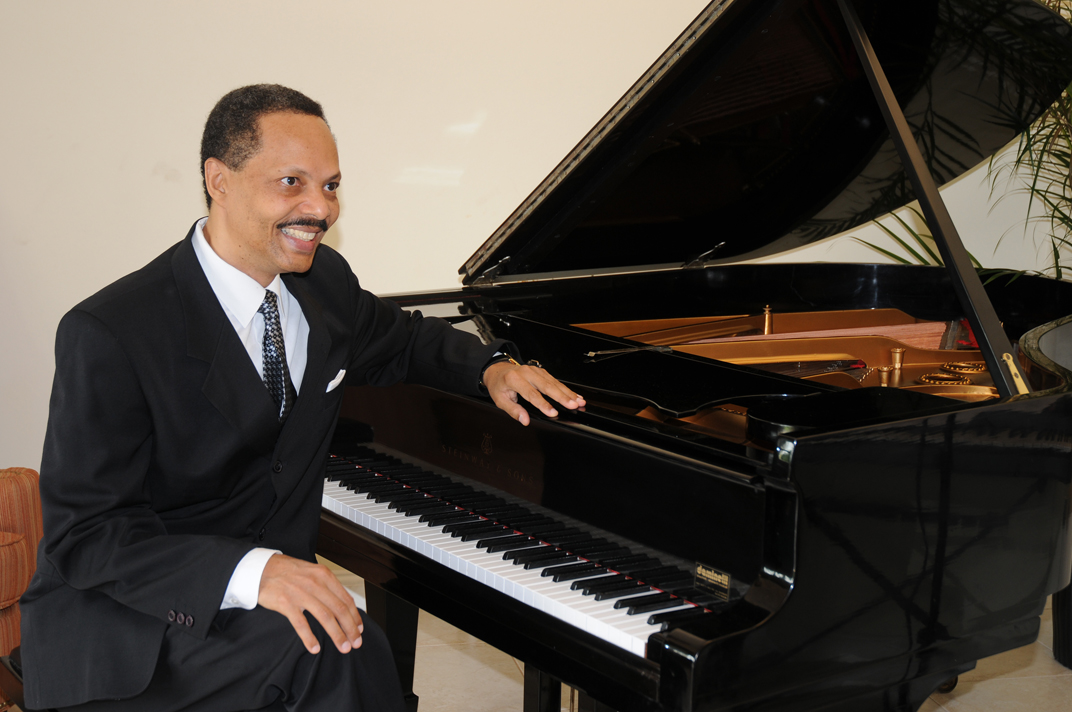
While some of the liberties Mr. Rhoden took may be chalked up to interpretive license, many of them were too much for this listener. Especially in the Sonata, Op. 53 of Beethoven (“Waldstein”) and Schumann’s Etudes Symphoniques, Op. 13, there were myriad grand ritardandi, puzzling tempo changes, dramatic bursts (where more measured dynamics were called for), and changed or added notes that did not enhance the score. While these “personal touches” may be preferable to having no reactions to the score whatsoever (an all too common occurrence), too many of them can distort the music. As just a few examples, in Schumann’s Etude II, grace notes were added in the wrong places and a gratuitous final C-sharp spoiled its character; moreover, the first and second endings of Variation XI had a different bass line than what is written (accentuated, to boot). One could be impressed at times that Mr. Rhoden simply follows his own drummer, as in Etude X, where his added left hand octaves hearkened back to some Romantic piano greats; unfortunately, though, some of these “liberties” must be considered errors, such as in the Finale where the last sixteenths of many measures were changed to eighths, completely changing the rhythmic energy.
The balance of the program included two Scarlatti Sonatas in A Major (L. 483 and 345),
Granados “Allegro de Concierto,” and Chopin’s Scherzo No. 2 in B-flat minor. While in the Granados, one missed the serene mastery of the recently departed Alicia de Larrocha, Rhoden’s characteristic freedom and cantabile phrasing brought some great moments to the Chopin. An encore, the Allemande from Bach’s French Suite in G Major, was followed by the Marley, which brought the house down.
Stanislav Khristenko, Piano
Stanislav Khristenko, a Ukrainian pianist and first prize winner of the Virginia Waring international piano competition, made his New York recital debut recently in a thoughtful, focused, and ultimately successful concert at Weill Recital Hall. The pianist revealed deep reserves of artistry and professionalism as the evening progressed, saving his most incisive and colorful playing for the program-ender, five short pieces by Prokofiev.

There was an unusual sense of risk in the pianist’s choice of the Shostakovich first sonata, op. 12 to begin the program. As Mr. Khristenko was acclimatizing himself to his instrument and the hall during this sonata, he did not make a thoroughly convincing argument for this work’s value. His talent and technique were in evidence immediately, but he pushed the tempo and over pedaled in scale passages where more clarity would have been appreciated. While I respect the challenge, this composition would be easier to play and hear in a later spot on the program.
In Schubert’s Sonata, d. 958, the pianist again took time to find the right approach to this work, both technically and interpretively. The Steinway at Weill hall is weak in the middle register, and I could hear Mr. Khristenko struggling to produce a singing tone in the first movement without forcing the sound. His voicing was bass heavy initially and his rubato a little stiff until he hit his stride in the final two movements. Most especially, the tarantella was a delight–alive rhythmically, yet relaxed, sounding simultaneously Schubertian and Italianate.
By the second movement of the Schumann C Major Fantasy, which began the second half, Mr. Khristenko was in full control of all his resources and played with a maturity that belied his young age. The performance was organic from beginning to end, and one of the best I have heard of this difficult work. With the briefest of pauses, the pianist then launched headlong into the Prokofiev.
In these five excerpts from ten pieces, op. 12, Mr. Khristenko was completely in his métier. Each selection sparkled like a gem, honed to perfection. These would have been impressive performances from any artist, but they were all the more joyful from a pianist at the outset of his career.
Mr. Khristenko has the poise and intellect of a seasoned performer. Despite the fact that all his programming choices were not ideally suited to his temperament, I applaud his appetite for adventure and discovery.
Cornerstone Chorale and Brass
I’ve never encountered anything quite like “The Courage to Care,” the program presented by Bruce Vantine’s Cornerstone Chorale and Brass. Part church service, part passion play, part concert, this program assumes a unique form in which Mr. Vantine attempts to carry out his stated mission “to use our time, talents and resources to minister to our brothers and sisters in need.”
On hand were a brass quintet, a pianist, a percussionist, two narrators, a chorus of twenty one and the conductor-composer-creator, Dr. Bruce Vantine. The performance ran without intermission and the audience was instructed to withhold applause until the end. The program was divided into five large sections entitled “By your will created,” “Called to serve all people,” “The courage to care,” “God so loved the world that he gave his only begotten Son,” and “Be not afraid.” We were provided with an eleven page program which contained the words of the narrators and of the choral selections, and I am happy to report that the lights in the audience were sufficiently bright that one could read the program with ease. This was especially helpful during the two hymns, which were audience sing-alongs. At other times it was hardly necessary, as the diction of the narrators and singers was exemplary.
Their fine diction was not the only way in which the Chorale excelled. Throughout the program they sang with beautiful sound, excellent intonation, and sincerity of intention. The several solos performed by chorus members were all well executed. Standing front and center, attractively clad in red, black and white, and singing everything by memory, they were the stars of the show. Equally skilled, however, was the brass quintet. During one of the most poignant moments of the “God so loved, etc.” section we were treated to a performance of one of music’s most beautiful pieces; the Adagio from Beethoven’s Sonata No. 8 (“Pathetique.”) Here Mr. Vantine’s message seemed to be that during times of greatest emotion, when words fail, music speaks.
This listener would have enjoyed the program more had there been fewer Christological exhortations throughout. To those of us who are not of the Christian faith, a program such as this can seem presumptuous and even distasteful. However, I was probably the only non-believer in the hall, and I can report that the rest of the audience loved it, as they demonstrated with a standing ovation at the end.
Minsoo Sohn, Piano
Minsoo Sohn is a pianistic phenomenon and a musical enigma. Born in Korea, he studied with Russell Sherman at the New England Conservatory, and established a brilliant career after winning an astounding number of international competitions, including Canada’s 2006 Honen Competition, which sponsored this New York debut.
Sohn’s program presaged his musical seriousness and stunning technique: Beethoven’s “Diabelli” Variations, considered one of his greatest but most intractable masterpieces, and four “Fantasies” by Liszt on vocal works of Beethoven, Schubert and Mozart. And as though there were not enough original piano music to choose from, the encores were transcriptions of orchestral pieces by Bizet, Gluck and Mendelssohn.
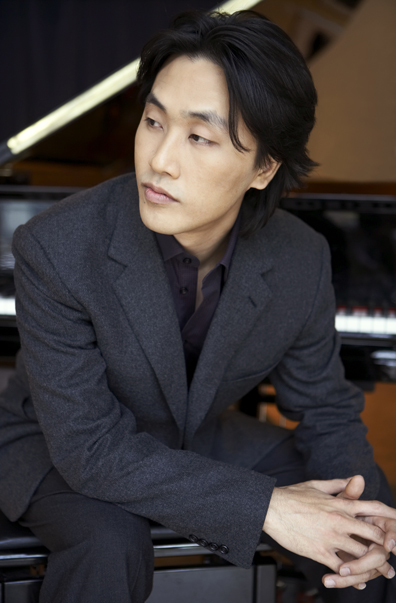
As might be expected of a spectacular young virtuoso, Sohn was most impressive in the Liszt “Fantasies.” Bravura showpieces loosely based on popular themes by classical composers, they bristle with every imaginable – and some unimaginable – instrumental challenges, all of which Sohn surmounted with breath-taking ease. His fingers flew across the keyboard; he shook long octave passages out of his sleeve; his tone went from whispers to rafter-shaking, though sometimes steely power. His affinity for the style – its phrasing, melodic contours, confident virtuosity – was complete. Yet, despite its expressiveness, his playing had a curiously detached quality; he seemed to be presenting rather than experiencing the music. This was even more apparent in the Beethoven Variations, which range from sublime serenity to parodistic humor. Though every tempo, phrasing and dynamic marking was meticulously observed, indeed often considerably exaggerated, the playing lacked what the great violinist/teacher Carl Flesch called “the inner impulse” that lets the performer enter the composer’s emotional world. Moreover, unlike most interpreters, Sohn inserted long pauses between variations; this may have facilitated bringing out their mood and character changes, but broke their continuity and cumulative impact.
The sell-out audience responded with concentrated attention and enthusiastic ovations.
Ensemble du Monde
On August 13th at Merkin Hall, conductor Marlon Daniel and his “Ensemble du Monde” performed Beethoven’s third, fourth and fifth piano concerti. I heard through the grapevine that all five concerti were originally planned. That would have provided more contrast because the first two concertos (especially the second in B-flat) are lighter than the final three, which—when heard together—tend to overdose us with Beethoven’s middle-period drama and heftiness of orchestration. In other words, if you’re going to do several Beethoven Piano Concertos, do the second, first (in correct composing order) and third on one program, and the fourth and fifth on another.

The fine pianist in the third concerto, Richard Dowling, played very well. He occasionally tossed off a bland phrase or two, but that may be my own predisposition to preferring dramatic “Sturm und Drang” performances of this C Minor composition. In the fourth concerto, Kimball Gallagher played with a pleasant tone throughout (although I thought the opening solo phrase was too loud). Sometimes, she needed more invention of shading and dynamics in this work’s tender more tender passages. It was enjoyable nonetheless.
The pianist in the “Emperor” Concerto, Beatrice Long, has a bravura temperament and technique suitable for this large-scale, heroic work, and she displayed musical excellence by bringing out nuances and important harmonic changes in the score. Her phrasing showed admirable shape and contrast; when, for example, a scale passage ascended, there was a slight crescendo to show the direction of the musical line, and vice versa with descending phrases. I wish she had taken the Adagio un poco mosso movement slower; Adagio un poco mosso, after all, means slow with a little forward movement. It should not sound like a Beethoven Andante, which translates to a walking, moderate pace.
Conductor Marlon Daniel has talent and great energy. He does need to watch his concentration; in the Largo of the third concerto, he gave a cue two bars too soon (luckily, the orchestra didn’t come in), and there were some shaky entrances and small lapses of ensemble. I recommend that he keep the volume of the trumpets and timpani down at Merkin Hall, as there was consistent blaring in the concerti’s outer movements. Still, Daniel and his orchestra have potential, and I would like to hear them again.
Xiayin Wang, Piano
Dear Reader: It gives me great pleasure to report that Xiayin Wang’s magnificent recital on May 18th was a milestone; a true rite of passage! As they say, nothing succeeds like success and before Ms. Wang even played a note, a large upbeat audience roared its approval as she took her place on stage. The ensuing opening chords of Haydn’s great last Sonata in E flat, Hob. XV1/52 (actually 62), played Maestoso, at once served notice that Ms. Wang’s appealingly reticent musical persona familiar to this writer from her several previous recitals and her compact disc (Marquis 81369) had metamorphosized into a bigger, bolder, confident and more interesting artiste. Rarely have I heard such an outstanding transformation (just for comparison, try Ms. Wang’s small scaled, shapeless performance of Mozart’s K. 330 Sonata on the cited recording). The Haydn was heroically revealed; the subito fortissimos at the ends of the first movement exposition and recapitulation had just the startling impact Haydn specified; the Adagio had remarkable gravitas and the movement’s imperious forte interjections and audacious juxtapositions of unexpected key relationships all enhanced the work’s harmonic tensions. The Finale too burst forth with a blistering Presto. Ms. Wang, you might say, made the Haydn sound like early Beethoven, and I think she was stylistically right on the money.
Chopin’s Ballade No. 2 in F Major, Op. 38 (some musicians like Brahms and Murray Perahia insist that the composition ends and should be identified as being “in A minor”) began liltingly, its opening melody lovingly shaped with subtle, unobtrusive rubato. The fierce ensuing second part came as an avalanche and the forward-thrusting phrasing slashed forward with unfailing direction and purpose. The potentially terrifying coda was rendered with note perfect confidence and accuracy: A great performance.
There were two World Premieres on Ms. Wang’s program. Richard Danielpour’s Preludes Book II, “The Enchanted Garden”, proved accessible and appealing. The first piece, “Persepolis” was rather suggestive of Poulenc. The second, “Surrounded by Idiots” scampered about engagingly; the Third was an “Elegy”; the Fourth “Lean Kat Stride” a jazzy free for all. And inevitably, for a suite called “The Enchanted Garden” Mr. Danilepour turned his sights to Ravel’s Mother Goose Suite. The pleasingly derivative music was beautifully written for the piano and evidently tailor-made for its dedicatee who played it to the hilt. The other World Premiere, Sean Hickey’s Cursive was a bit harder for this reviewer to absorb in one hearing, but it, too, was demandingly and effectively written for the piano (Hickey, according to his bio was trained as a jazz guitarist). His piece was also handsomely played by Ms. Wang.
Everyone these days seems to be fielding Ravel’s Gaspard de la nuit and Ms. Wang’s account of Scarbo was unusually robust and large scaled (with all its fearsome repeated notes and virtuoso obstacles magnificently under control.
Scriabin’s 1903 Valse, Op. 38 was elegantly bittersweet. (Ms. Wang has always shown special affinity for the short-lived Russian composer’s slightly demented music and, as this review is written, a new all-Scriabin Naxos recording from Ms. Wang is imminently awaiting release.)
The formal portion of the concert ended with one of the fastest, fleetest accounts of Liszt’s Mephisto Waltz No. 1 with all its swashbuckling glissandos (which we heard earlier in the Danielpour), and leaps brilliantly nailed.
For an encore, the pianist beguiled us with one of those Chinese Picture Postcards, “The Autumn Mood over the Calm Lake” from the Dvorak dynasty (you might say that pentatonic scales were as typical of the Czech composer’s music as any quintessential Chinese or Japanese stereotype).
